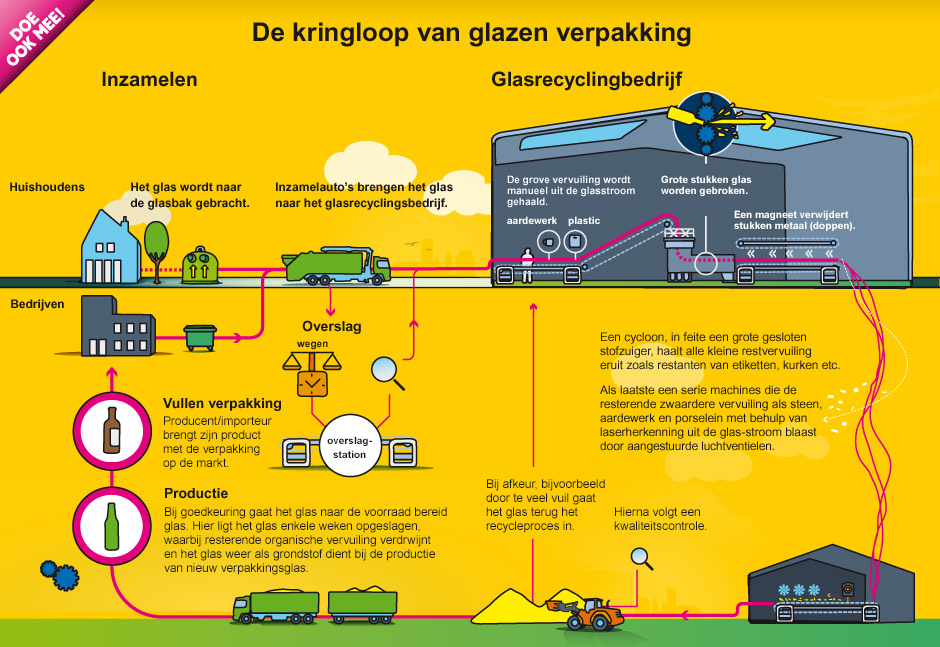The glass cycle
From bottle bank to glass factory, glass goes through an extensive cycle. But how do we actually complete the circle?
You take your glass to the bottle bank
You and other consumers throw your packaging glass into the bottle bank. The glass is separated by colour. The separation method varies from one municipality to another, but is usually very clearly indicated at the bottle bank.Your local authority empties the bottle bank
Municipalities or collection companies engaged by municipalities empty the bottle banks when they are nearly full. Emptying is done with a special collection vehicle. It has separate compartments for white glass and green and/or brown glass. Glass separated by colour comes to Maltha.Every shard counts
When the glass arrives at Maltha, it is first dried. The dust created by dried moisture and food residue is extracted. Then the glass passes through advanced separators on a conveyor belt. Everything that is not glass is taken out. Did you know that not a drop of water is used in the recycling process?A magnetic tape removes metals, such as lids. A special separator removes non-magnetic metals, such as aluminium sleeves from wine bottles. Maltha also removes plastic lids and caps from the glass. A special, intelligent sorting machine shoots out pieces of ceramic, stone and porcelain from the glass. Labels, corks, straws and other light materials are removed with a kind of large vacuum cleaner, which hangs above the conveyor belt.
The trick is not to let any shards of glass disappear from the process along with the contamination. Only the contamination has to come out; we want to reuse every shard. Maltha also recycles the separated metals, plastics and stony materials.
As raw material to the glass factory
Within half an hour, a batch of container glass will have passed through the Maltha factory. The result is a large pile of pure glass, ready to be used as a raw material for the production of new glass packaging. This is usually transported by barge to the glassworks.The glass factory makes a mixture from the recycled glass. This mixture can consist of up to 85% shards, supplemented by sand, soda and lime. These are the primary raw materials. If the mixture is to be made into coloured glass, a little dye is added. In large furnaces, at about 1,300 degrees Celsius, the mixture melts in 24 hours to liquid glass. The glass flows out of the furnace and is cut into drops with scissors. The drops fall into a glass blower. A bottle or jar is blown from each drop. Afterwards, the bottles and jars must cool down. After inspection, they are ready to be filled with food and drinks and sent to the shop.


